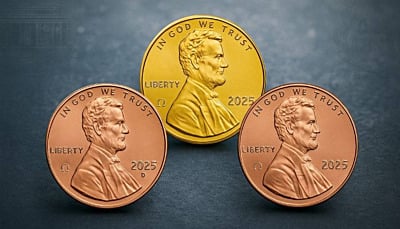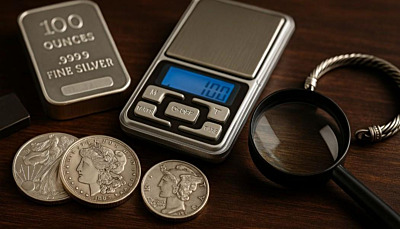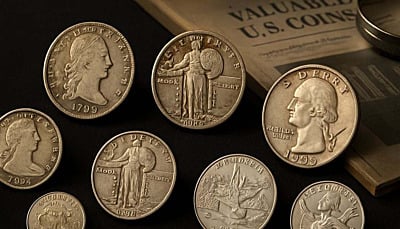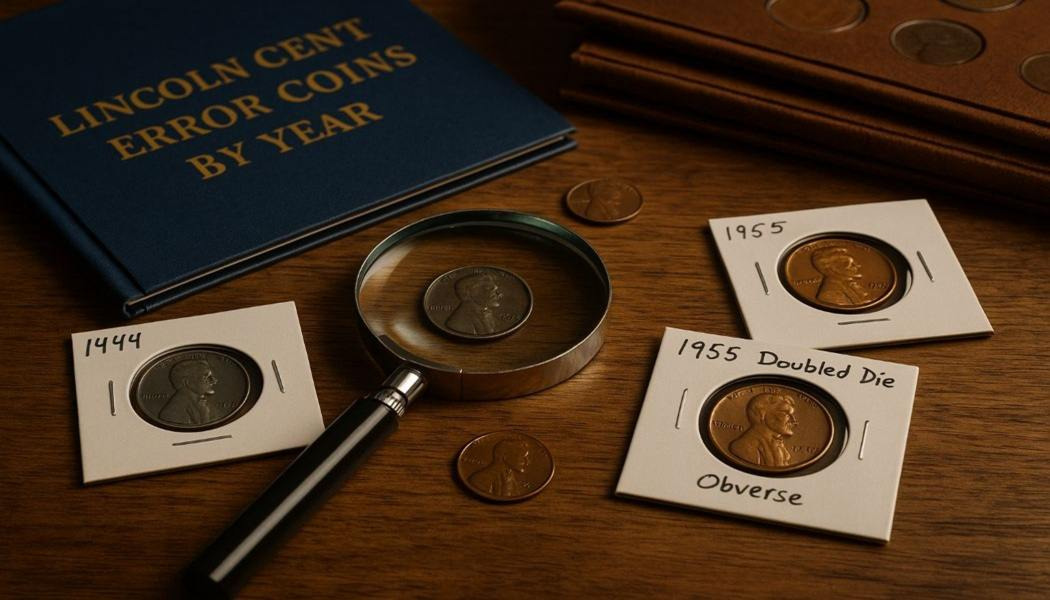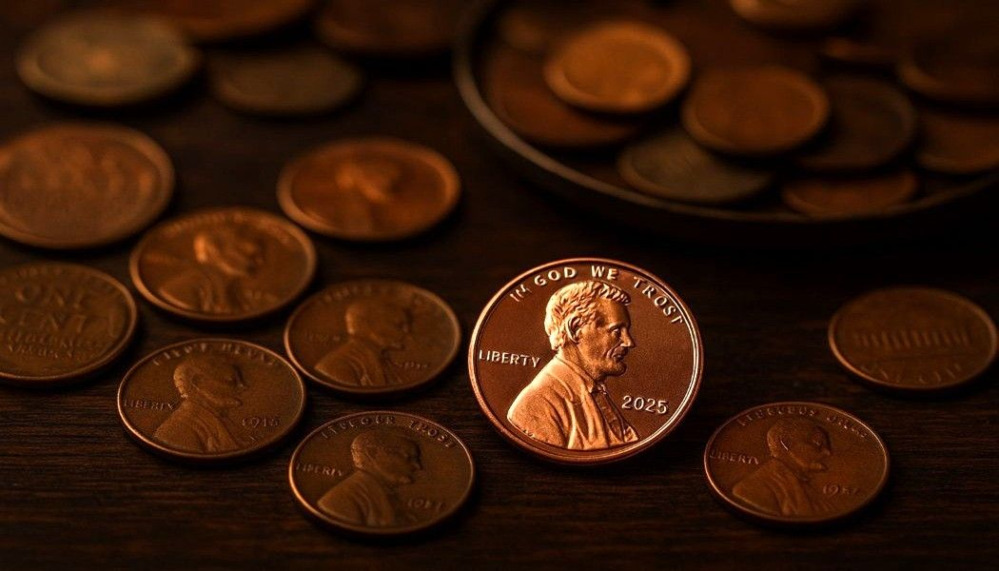Why Rare Lincoln Penny Errors Fascinate Numismatists
Since its introduction in 1909, the Lincoln Cent has stood as a cornerstone of American coinage and one of the most collected U.S. coins in history. Spanning more than a century of continuous mintage, this series offers an extraordinary range of minting blunders, die varieties, and transitional composition errors that continue to captivate collectors worldwide.
From subtle doubling in dates to striking production mistakes such as the 1943 Bronze Cent or the 1955 Doubled Die Obverse, Lincoln penny errors can transform ordinary pocket change into coins worth thousands of dollars. Understanding these rare penny errors by year is essential for identifying valuable coins hidden in plain sight.
Below is a year-by-year guide highlighting the most significant and collectible Lincoln Cent error coins in U.S. history.
Lincoln Cent Error Varieties by Year
1909
-
1909-S VDB: Not technically an error, but this low-mintage key date remains one of the most iconic and desirable coins in the series.
-
1909 Doubled Die Obverse: Strong doubling on “LIBERTY” and parts of Lincoln’s profile distinguish this rare early variety.
1917
-
1917 Doubled Die Obverse: Bold doubling visible on the date and motto makes this one of the standout early Wheat Cent errors.
1922
-
1922 No D (Denver): The only Lincoln Cents minted exclusively in Denver. Some dies wore down, omitting the “D” mintmark entirely — a classic mint error.
1943
-
1943 Bronze Cent: Accidentally struck on leftover copper planchets instead of steel. Extremely rare and highly valuable.
-
1943-D Bronze Cent: Even scarcer than its Philadelphia counterpart, with only a handful known.
-
1943 Steel Cent Doubled Die: Doubling appears on “IN GOD WE TRUST” and “LIBERTY.”
1944
-
1944 Steel Cent: A transitional error caused by leftover steel blanks from the prior year, making this another coveted rarity.
1955
-
1955 Doubled Die Obverse: Perhaps the most famous Lincoln Cent error. Heavy doubling across all obverse lettering makes it instantly recognizable and valuable.
1960
-
1960 Small Date Over Large Date: This overdate variety features a smaller numeral style over a larger one. Particularly prized in proof condition.
1969
-
1969-S Doubled Die Obverse: One of the most dramatic and rare doubled dies in U.S. coinage history, with intense doubling on “LIBERTY” and “IN GOD WE TRUST.”
1970
-
1970-S Small Date: Hard to locate in high grades; appears in both proof and mint sets.
-
1970-S Doubled Die Obverse: Noticeable doubling on the date and legends makes this a desirable San Francisco variety.
1972
-
1972 Doubled Die Obverse: Prominent doubling on the date and motto. Considered one of the top collectible modern error coins after 1955.
1982 (Transitional Year)
During this transition, both copper (3.11g) and zinc (2.5g) planchets were used.
Collectors will encounter Small Date and Large Date variations in both compositions.
The rumored 1982-D Small Date Copper remains unconfirmed but sought after. Transitional and off-metal errors from this year are a hotspot for variety hunters.
1983
-
1983 Copper Planchet Error: Struck on leftover bronze planchets; extremely rare, weighing approximately 3.11g.
-
1983 Doubled Die Reverse: Doubling visible on the Lincoln Memorial, “ONE CENT,” and “E PLURIBUS UNUM.”
1984
-
1984 Doubled Ear: A clear extra earlobe below Lincoln’s portrait makes this one of the most recognizable modern errors.
1992
-
1992 Close AM (Philadelphia and Denver): Reverse design intended for proof strikes mistakenly used on business strikes — rare and valuable.
1995
-
1995 Doubled Die Obverse: Doubling on “LIBERTY” and “IN GOD WE TRUST.” Readily available but a must-have for error collectors.
1998, 1999, 2000
-
Wide AM Reverse: Reverse spacing typical of proof coins used on circulation issues. These subtle design variations are highly collectible.
2004–2006
-
Weak or Incomplete Strikes: Die adjustment strikes or debris can cause missing design details, producing minor yet collectible mint anomalies.
2009
-
Lincoln Bicentennial Series Errors: Four commemorative reverse designs celebrate Lincoln’s 200th birthday. Early examples may show die clashes, cracks, or misalignments.
2017-P
-
First Cent with “P” Mintmark: While not an error, this one-year issue marked the U.S. Mint’s 225th anniversary and remains a notable modern variety.
Why Lincoln Cent Errors Hold Significant Value
Collectors prize Lincoln Cent error coins for their combination of rarity, historical importance, and accessibility:
-
Eye Appeal: Many display dramatic visual features noticeable without special tools.
-
Scarcity: Certain varieties, like the 1943 Bronze or 1969-S DDO, exist in minuscule quantities.
-
Affordability: Even beginners can discover minor doubled dies or planchet errors in circulation rolls.
-
Historical Connection: Each error tells part of America’s numismatic and industrial story over more than 100 years.
The Collector’s Takeaway: Don’t Overlook the Penny
From the early Wheat Cents to today’s modern designs, the Lincoln Penny remains one of the most studied and rewarding U.S. coins to collect.
Whether you’re completing a date-and-mint set, examining rolls under magnification, or searching dealer inventories, Lincoln penny errors offer both educational value and the potential for remarkable discoveries.
Keep your scale, loupe, and reference guides ready — that next valuable Lincoln Cent could be waiting right in your pocket change.

